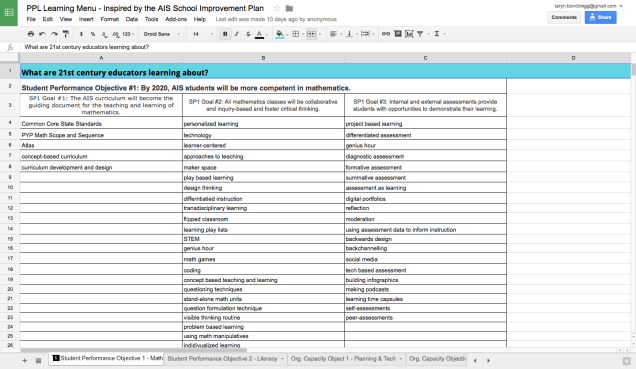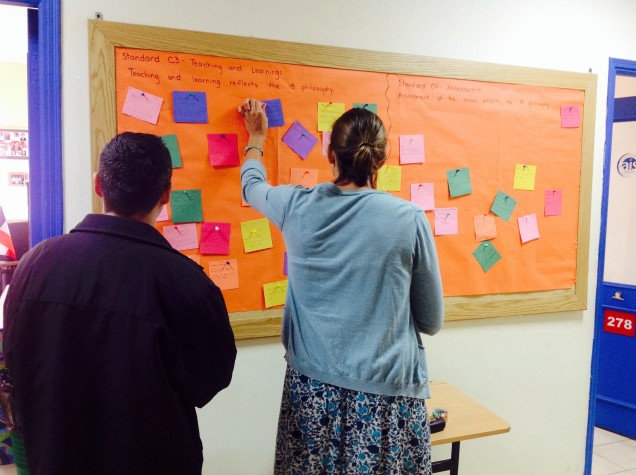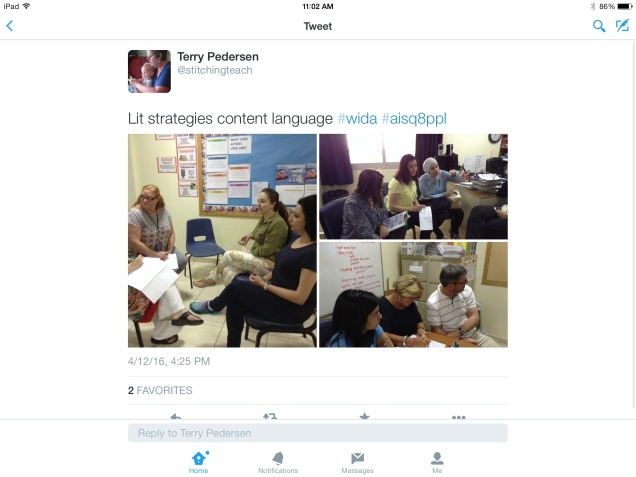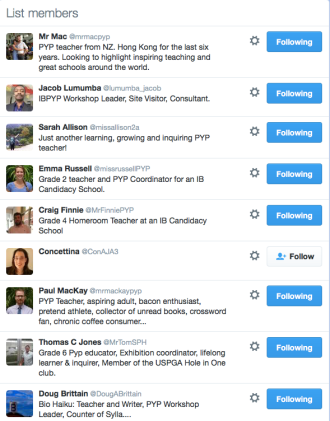As PYP Coordinator, my job is not only to support my colleagues as teachers, but also as learners. When I meet with them to talk about their professional learning I usually ask the same three questions:
- What have you been learning about lately?
- How have you been learning about it?
- What do you plan to learn about next?
When I’m having these conversations, it’s often responses to the second question that stick with me and get me thinking about different types of resources, how they support different purposes and where they fit along the journey of a life long teacher-learner.
Based on my own reflections and perspectives, I created Taryn’s Taxonomy of Professional Learning Resources to illustrate my beliefs about the many different sources teachers use for their professional learning.
Teachers Pay Teachers – I can understand why teachers use TPT. I pass no judgement on teachers who uses TPT. However I don’t like TPT for a variety of reasons, many of which are shared by fellow educators Matt Gomez and Chelsea Bashore. For these reasons, I believe that TPT is on the lower end of the taxonomy of professional learning resources. I think TPT provides teachers with things teachers can use right away in their classroom, but like Edna Sackson says, “effective professional learning is not about things you can try tomorrow, but rather big ideas that shift your understanding of teaching and learning”. I’ve yet to see TPT as source of big ideas that shift teachers’ thinking and until it does, it will remain on the bottom of my taxonomy.
Pinterest – I’ve shared my opinions about Pinterest before. So have other educators. I think similar to Teachers Pay Teaches, time spent on Pinterest is most often focused on the “what” of teaching, not necessarily the “how” or “why”. Focusing on the “what” keeps us in the cycle of doing school and prevents us from moving closer towards real learning. Many teacher-friends have been telling me that Pinterest has gotten better lately – for this reason I have placed it above TPT- but I still have my reservations. Until the comments shift from “I saw something on Pinterest I am going to try” to “I learned something on Pinterest that blew my mind and totally challenged my thinking about _____” it will remain on the lower end of my taxonomy.
Blogs – Blogs. Now we’re getting somewhere! True, some blogs can still be stuck in the “what”, but good blogs start to move into the “hows” and “whys” of teaching and learning. Blogs allow teachers to share their practice, thoughts, questions and reflections. This reflective, narrative quality is what opens up the conversation to allow for the exploration of how to turn theory into practice and why something is worth knowing or doing in the first place. Really excellent blogs even go so far as to critically look at teaching and learning, ask provocative questions and challenge your thinking about why we do what we do – and why we need to do it better! However, something to be cautious of, is the fact that anyone can blog, which means much of what is written is coming from one person’s experience and perspective (like this post for example!) so you have to be discerning and critical as a blog consumer.
Twitter – Twitter is in a very similar category to blogs for a few reasons. First of all, on Twitter you can find “whats”, “hows” and “whys”. However, the benefit of Twitter is that you are exposed to a wide range of everything all at once so you can easily skip past the “whats” in search of the “hows” and the “whys”. Also – similar to blogs – you also have to be a critical consumer when reading people’s perspectives and opinions about teaching and learning. Yet, even though Twitter is a forum where personal perspectives are shared, research is also discussed and cited quite regularly. Edna Sackson advocates for professional learning that challenges our thinking by providing us with tensions to work through and big ideas to connect. In my opinion, Twitter as a resource successfully accomplishes that very goal!
Research – Education research… the highest level on the taxonomy… the apex of the pyramid… and sadly, the most seldom used source of teachers’ professional learning (present company included!). Sources like ERIC, ASCD and Google Scholar provide access to thousands of journal articles that provide strategies for teaching and learning that are supported by data. Education research can provide answers to our questions about the “what”, “how” and “why” in research-based ways. It’s not one educator’s opinion about what they think is effective in the classroom, it’s what has been shown to be effective through rigorous research design, large amounts of data collection and sophisticated analysis and interpretation. The question is, if all of this amazing, data-supported education research is available… why aren’t more of us using it in our professional learning?
Peers – I have placed peers as a resource for professional learning all the way up the pyramid. This is because I believe peers can be an amazing source of professional learning – depending on what is being shared. Peers can be an avenue for sharing everything from a “what” found on TPT all the way up to research-supported “hows” or “whys”.
When I think back on my own journey as a learner, I can see how I have moved up the taxonomy over the years- starting from focusing on the “what” and year by year getting closer to focusing on the “why”. I was never much a TPT user, but I was definitely a Pinterest addict and spent my early years in education looking for things I could use in my classroom. Last year I got into blogs to support my inquiries that were more focused on learning about how teachers made inquiry-based, concept-driven education a reality for their students. This year I am all about Twitter. I love scrolling through and having my own beliefs about teaching and learning challenged and learning about new ideas and initiatives that help me move away from “doing school” and closer to being able to facilitate true learning. I can clearly see where I need to head next…. in to the scary land of education research. That will be my focus for next year.
When thinking about this taxonomy and my role as PYP Coordinator, I am beginning to think that my job is not only to support teachers’ learning… but also to support teachers as learners by helping them move up the pyramid to use sources in their professional learning that are grounded in research and focus on big conceptual shifts in thinking.
Where are you on the taxonomy?
What are your perspectives on the different sources of professional learning?
What sources of professional learning am I missing? Where would you place them?
How do you help your colleagues move up the pyramid?







































